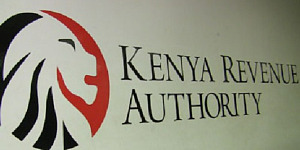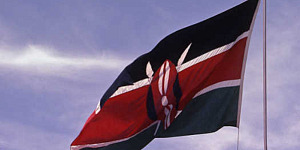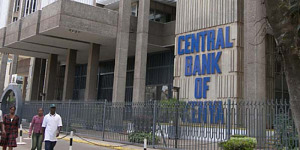Fitch Ratings has affirmed Kenya's Long-Term Foreign-Currency Issuer Default Rating (IDR) at 'B+' with a Stable Outlook. A full list of rating actions is at the end of this rating action commentary.
KEY RATING DRIVERS
Kenya's ratings reflect its strong medium-term growth prospects balanced against persistent twin deficits and elevated public and external debt levels.
Fitch has raised its growth forecast for 2018 to 6%, supported by favourable weather conditions and the fading of political uncertainty around the August and October 2017 elections that had reduced growth in 2017 to 4.9%. Over the medium term, Fitch expects a recovery in private-sector credit growth and increased private-sector investment to keep GDP growth at around 6%. Fitch expects inflation to fluctuate within the Central Bank of Kenya's target range of 5% +/-2.5pp, despite the recent acceleration to 5.7% in September as a result of higher oil prices and a normalisation of agricultural output.
Public finances remain a rating weakness, although progress on fiscal consolidation is expected. Fitch estimates the fiscal deficit for the year ended June 2018 (FY18) to be 7.1% of GDP, well above the current 'B' median of 4.3% but significantly lower than the 8.9% in FY17. Fitch forecasts the FY19 fiscal deficit to fall to 6.6% of GDP, which is above the government's deficit target of 5.6%, reflecting a record of under-shooting revenue targets. New tax measures, including a VAT on fuel and increased taxes on some electronic payments, will help to improve revenue performance, although the government scaled back some of the new taxes in response to protests.
The government's expenditure framework will continue to be driven by the Big Four Agenda, which focuses on manufacturing, health care, affordable housing and agriculture. Government capital expenditure will fall relative to GDP as many of the large public infrastructure projects are moving towards completion. Phase 2A (Nairobi to Naivasha) of the standard gauge railway (SGR) has commenced and the government expects it to be completed by June-2019. The government is currently arranging financing for Phase 2B (to the Ugandan border).
General government debt was 57% of GDP at FYE18, unchanged from FYE17, and will increase slightly in FY19 before plateauing in subsequent years as Kenya's primary fiscal deficit narrows to 2% of GDP in FY20. The primary deficit averaged 4.5% of GDP in FY14 to FY18. The increase in government debt over those years brought interest service to 21.5% of revenue in FY18, higher than the current 'B' median of 11.9%.
The current account deficit (CAD) will narrow to 5.3% of GDP in 2018, from 6.4% in 2017, as remittances, tourism receipts and agricultural exports increase. However, the CAD will only decline moderately to 5% through 2020 as export levels return to normal and oil prices raise the import bill. The Kenyan shilling appreciated in early 2018, but has remained mostly stable in 2018 despite a broader emerging-market selloff and the expiry of the IMF Standby Credit Facility (SCF), trading between KES100 and KES102 to the US dollar since February. Tightening global financing conditions are expected to exert some downward pressure on the shilling. Kenya's FX reserves of USD9 billion (5 months of current external payments) as of June 2018 provide a comfortable level of liquidity.
Non-performing loans in the banking sector increased to 12% of total loans in 1H18 owing to trouble with a few big corporate borrowers. The recent cuts in the central bank policy rate will add to pressures on bank performance as lending interest rates are capped at 400bp above the central bank rate. However, Fitch does not expect the banking sector to weigh significantly on the sovereign's creditworthiness. Credit growth declined to 2% in 2017 but has started to recover as political uncertainty has faded.
Structural factors constrain the sovereign's ratings. Kenya is in the 22nd percentile of the UN Human Development Index. Kenya's governance indicators are weaker than the current 'B' median. Additionally, Kenya has a history of instability around national elections, the next of which is scheduled for 2022.
SOVEREIGN RATING MODEL (SRM) and QUALITATIVE OVERLAY (QO)
Fitch's proprietary SRM assigns Kenya a score equivalent to a rating of 'B+' on the Long-Term Foreign-Currency (LT FC) IDR scale.
Fitch's sovereign rating committee did not adjust the output from the SRM to arrive at the final LT FC IDR.
Fitch's SRM is the agency's proprietary multiple regression rating model that employs 18 variables based on three-year centred averages, including one year of forecasts, to produce a score equivalent to a LT FC IDR. Fitch's QO is a forward-looking qualitative framework designed to allow for adjustment to the SRM output to assign the final rating, reflecting factors within our criteria that are not fully quantifiable and/or not fully reflected in the SRM.
RATING SENSITIVITIES
The main factors that, individually or collectively, could lead to a positive rating action are:
- A significant decline of government debt/GDP;
- A narrowing in the current account deficit and/or a decline in net external indebtedness; and
- An improvement in structural indicators, for example higher GDP per capita or an improvement in governance indicators.
The main factors that, individually or collectively, could lead to a negative rating action are:
- Failure to stabilise government debt/GDP;
- Widening of the current account deficit or increases in net external debt.
KEY ASSUMPTIONS
Fitch assumes the global economy evolves broadly in line with the projections in its latest "Global Economic Outlook".
The full list of rating actions is as follows:
Long-Term Foreign- and Local-Currency IDRs affirmed at 'B+'; Outlook Stable
Short-Term Foreign- and Local-Currency IDRs affirmed at 'B'
Country Ceiling affirmed at 'BB-'
Issue ratings on long-term senior unsecured foreign- and local-currency bonds affirmed at 'B+'








































